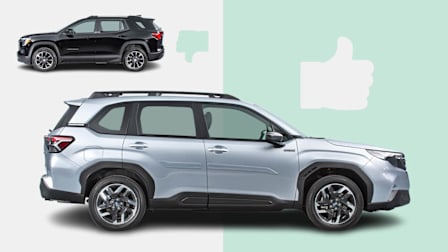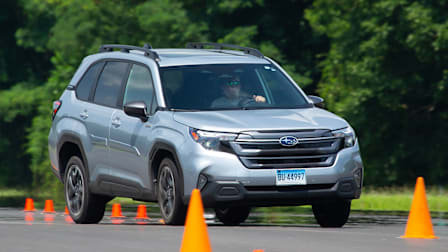How to Buy a Car From Another State
Take these crucial steps when shopping for a car long distance

Buying a car from out of state is becoming more common due to limited inventory, but it’s not without its potential pitfalls.
When Colleen McDarby set out to buy an Audi Q8 last fall, she had no idea her search would lead to a dealership in Des Moines, Iowa, and end up involving a repair shop.
McDarby, a federal employee, couldn’t find a vehicle with the features she wanted at dealers near her hometown in Centreville, Va. So she went to CarGurus, an automotive comparison shopping site, plugged in the details, and found an Audi dealer in Des Moines with the exact model. She purchased the vehicle in October.
1. Determine Which Car You Want to Buy
Before you dive into a long-distance search, you’ll want to identify the specific vehicle you’re looking for so that you can compare apples to apples when reviewing offers.
To do this, browse ratings and reviews online, factoring in budget, size, and lifestyle needs. It’s also a good idea to check the reliability histories, owner satisfaction scores, and information about safety features and crash-test results at CR.org/carsatoz.
And, if possible, test-drive the model that you’re eyeing from the nearest dealer to experience a vehicle configured as close to your dream car as possible. In some cases, this may mean driving the model in a different configuration or trying a related model to experience the engine, infotainment system, or other key features.
Identify the trim and equipment that you’d like; you’ll need a specific description to expand your search.
2. Cast a Wide Net
Before wrangling quotes, look at current transaction prices using CR’s Build & Buy Car Buying Service to learn what’s a fair price for the model you want. This will provide a baseline that you can use when soliciting offers from dealers. (CR members can access more than 12,000 prescreened dealers nationwide and view current prices on specific vehicles for sale at dealerships.)
Then shop around to find the best deal.
“I would talk to at least three or four dealerships,” says Gabe Shenhar, associate director of CR’s auto test program. “That will give you an idea of what’s out there and what kind of leverage you have in terms of negotiating.”
You can also search an automaker’s website to see which dealerships have your desired vehicle in stock.
“Some dealerships will not sell a car to an out-of-state buyer right now, because they’re trying to meet local demand first,” says Simpson, the Black Book industry analyst.
Another caveat: “Some dealers won’t sell a car out of state unless you finance a loan from them and use their preferred lender,” Simpson adds. “Most dealers have three to seven lenders they work with, so that’s not necessarily a negative thing, but it is something to consider.”
3. Kick the Tires (Remotely)
If you’re shopping for a used vehicle, it’s important to assess what shape the car is in. Checking a vehicle from a distance, though, is trickier than checking a used car at a local dealer.
If you can’t view the car in person, the best approach is to hire a professional mechanic in the area to inspect it, advises Brian Moody, executive editor at Autotrader. The inspection should line up with the car’s vehicle history report.
4. Find a Reliable Transport Company
Some dealerships have their own transportation service, but many require out-of-state customers to use their own delivery provider, Simpson says.
To find a reliable, reasonably priced carrier, compare offers online. You can solicit free estimates from companies by using a site like uShip, a car transport service marketplace.
Prices are based on two factors, says Dean Xeros, uShip’s head of strategic partnerships: distance and time of year.
“Summer is peak season for the relocation industry, because more families move while kids are out of school, so that puts a strain on car transportation providers, which results in prices going up,” he says. “Between Memorial Day and Labor Day you’ve got a whole lot more cars that need to be moved, but you have the same number of trucks that can move them.”
When vetting car transport carriers, Moody suggests looking at customer reviews on Yelp and the Better Business Bureau. (Ideally, you want to hire a company that’s accredited by the BBB.)
5. Protect Your Investment
The federal government requires car transport services to provide basic liability insurance, but Xeros recommends choosing a company that also provides cargo insurance.
Cargo insurance covers damage to a vehicle during the shipping process. Terms and coverage amounts can vary depending on the company, Xeros cautions. “If you’re buying an $80,000 Mercedes and the carrier only provides $50,000 worth of cargo insurance, you’ll want to get an insurance rider to cover the gap,” he says.
Find out whether your vehicle will be transported in an open or closed container. “A closed container is going to protect your car from the elements so that it won’t suffer damage from hail or other severe weather,” Moody says.
And last, “Inspect the vehicle before you take possession of it to make sure it’s in the condition it’s supposed to be in,” Simpson says. If it’s not, contact the carrier and dealer immediately.




















